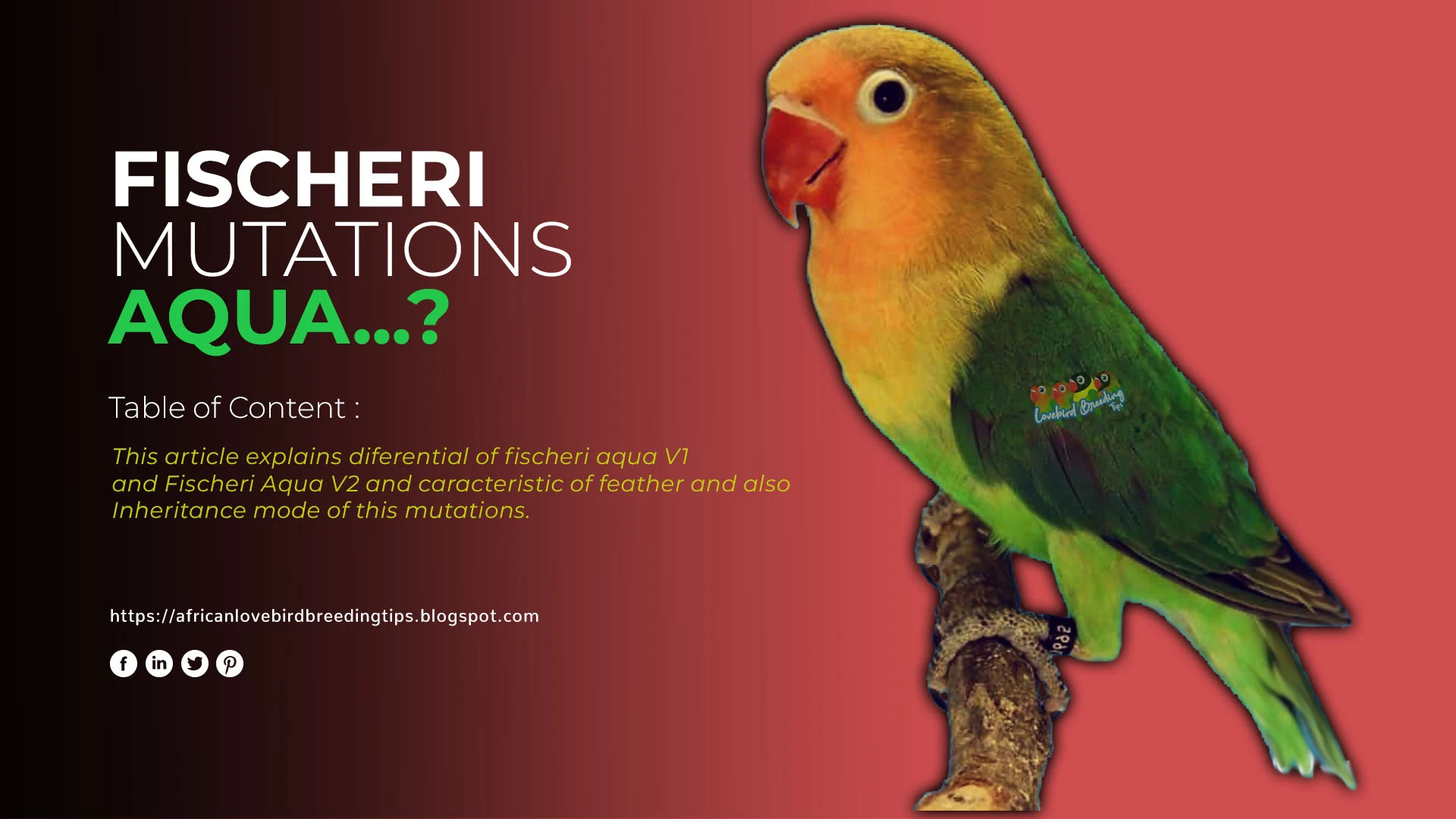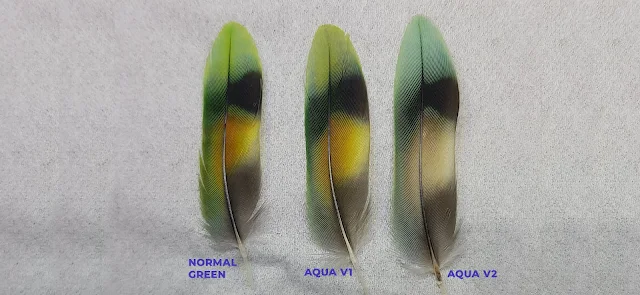
Aqua mutations in African lovebirds, we see a bird born from Green/blue with a yellow color tending to return to its original after changing adult feathers.
It is not wrong because the bird appears first, but sometimes it is true there is an indication that there is already a genuine mutation of Aqua in Fischeri.
Of course, this is still a debate, but the bias is said Aqua V2 could indeed be a true mutation.
The actual mutation is a mutation that can be known with certainty about inheritance mode.
And, of course, it can be passed on to its offspring with the correct breeding formula.
You can see it on the Danish Agaporni's upload about their Aqua. Like that's what I call Aqua V1.
Green
Series birds with a yellow mask display with a bright green body color. V2.
Please note that Lovebird Aqua V1 and Lovebird Aqua V2 are different. Of course, you will be disappointed when you find the bird you bought is Aqua v1 instead of Aqua.
And it's unlikely that the Lovebird Aqua mutation actually exists, looking at what was released by Ornito Genetics about the last update of the Agapornis mutation table.
We can see on the table that aqua mutations in Fischeri columns are still in the form of question marks and may still
be held for research.
This article will discuss the difference between the Aqua V1 lovebird mutation and
Aqua V2 Lovebird Mutation. Both genotypes and phenotypes with possible delivery are easy to understand.
Difference between aqua mutation vs modified Aqua
Fischeri Aqua Mask Color

Mask Color: In Lovebird Aqua V1, the mask looks completely yellow, while in Lovebird Aqua V2, the mask color tends to be red gold and some golden orange on the forehead and cheeks.
Fischeri Aqua Body Color

Body Color In Lovebird Aqua V1, the body color tends to be greenish-blue on the chest and standard green with a
little blue patch on the wings.
In some conditions, the dark factor is almost like the base color of
blue1blue2. While the body colour of Lovebird Aqua V2 is entirely blue1blue2.
Fischeri Aqua Pattern color on the tail

Pattern color on the tail: In Lovebird Aqua V1, the color of the tail pattern will remain red, as found in the wild type. Meanwhile, the Lovebird Aqua V2 tail pattern color will be orange-gold, matching the mask's color.
Fischeri Aqua beak color

In Lovebird Aqua V1, the beak color is red, while in Lovebird Aqua V2, there are several versions, beaks like blue1blue2 or faded orange.
Fischeri Aqua Combinations

Mutation color variation: In Lovebird Aqua V1, only 2 types of standard colors and dark factors are still in the
green series.
While on the lovebird, Aqua V2 combination with blue will get a bluebird phenotype with a
pink-orange mask.
Genotype Fischeri Aqua
- Inheritance mode: In Lovebird, aqua V1 can not be definitively inherited, the color is the result of epistatic.Usually obtained from pairing Green/Blue1 x Blue1blue2 or it can also still be related to opaline splitting. While on the lovebird aqua V2 recessive heritage mode and associated with the blue locus.
- Inconsistency: The color of the feathers on the Lovebird aqua V1 will change to normal series green when changing adult feathers. While on The Lovebird Aqua V2 their color is consistent until adulthood and can be lowered.
From this explanation, Lovebird Aqua V1 is a phenotype deviation that occurs when the bird is under 5 months
old.
While Lovebird aqua V2, whether it is just an aberration or indeed a true mutation, is still in the
research stage.
Of course, we must honour breeders fully dedicated to aqua fischeri mutation research.
Believe me, they continue to work to provide information to ornito genetics as experienced in this regard. And, of course, this will take a lot of time before its peak.
